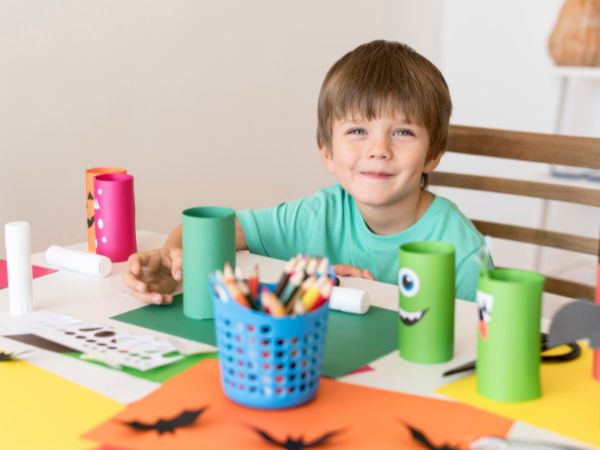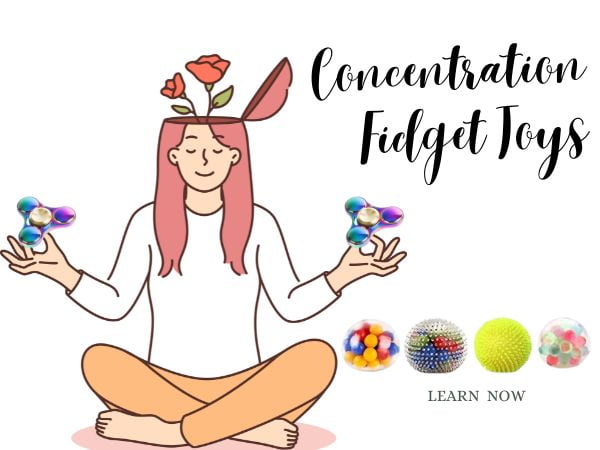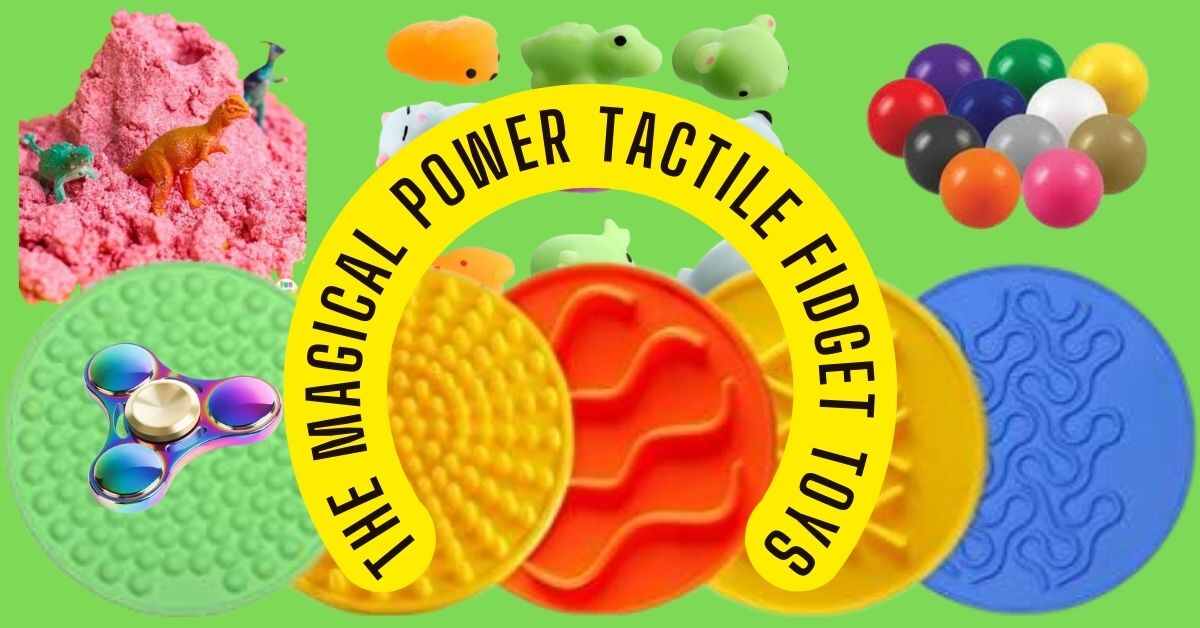1. Introduction
In today’s dynamic classroom environments, fostering concentration and a conducive learning atmosphere is paramount. However, for students with attention-related challenges like ADHD or anxiety, “Quite Fidget toys for school” can be a formidable task. Enter quiet fidget toys, a simple yet transformative solution that has been gaining traction in educational settings.

Table of Contents
2. Understanding the Need for Quiet Fidget Toys for School
2.1 The Importance of Focus in a Classroom Setting
Maintaining focus during lessons is crucial for comprehension and retention of information. However, factors like distractions, restlessness, or sensory sensitivities can hinder a student’s ability to concentrate.
2.2 Challenges Faced by Students with ADHD or Anxiety
Students with ADHD often grapple with hyperactivity and impulsiveness, making it difficult to stay still and attentive. On the other hand, those with anxiety may experience heightened stress levels, further exacerbating concentration issues.
2.3 Introducing Quiet Fidget Toys as a Solution
Quiet fidget toys for school provide a discreet outlet for excess energy and sensory input, allowing students to redirect their restlessness in a non-disruptive manner. These unobtrusive tools have demonstrated significant potential in improving focus and reducing anxiety levels.
3. Types of Quiet Fidget Toys
3.1 Tactile Fidgets
1. Understanding Tactile Fidgets
1.1 What Are Tactile Fidgets?
Tactile fidgets are objects or tools designed to provide sensory stimulation through touch. They come in various forms, textures, and sizes, allowing users to engage their sense of touch in a controlled and calming manner.
1.2 How Tactile Stimulation Aids Focus
The sense of touch is a powerful tool for sensory regulation. By providing a tactile outlet, fidgets can help individuals redirect excess energy, promote a sense of calm, and improve their ability to concentrate on tasks.
2. Types of Tactile Fidgets
1. Textured Stress Balls
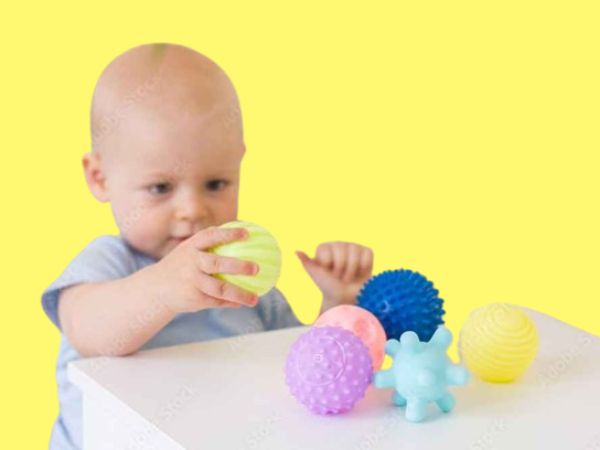
These palm-sized, squeezable balls are covered in various textures, providing a satisfying tactile experience. They are ideal for discreet fidgeting during meetings, classes, or while working.
2. Fidget Rings

Designed to be worn on the finger, these rings have textured surfaces that users can manipulate with their thumb for subtle sensory input. They are excellent for individuals who prefer discreet fidgeting.
3. Squishy Toys
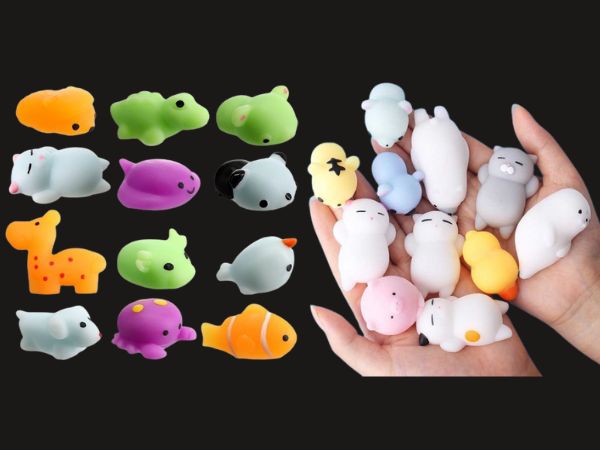
Soft and pliable, squishy toys are perfect for kneading, squeezing, and shaping. They offer a soothing tactile experience that can help alleviate stress and anxiety.
4. Tactile Discs

These flat, textured discs provide a surface for users to rub, touch, or press with their hands or feet. They are versatile tools that can be used in various seated or standing positions.
5. Velcro Strips
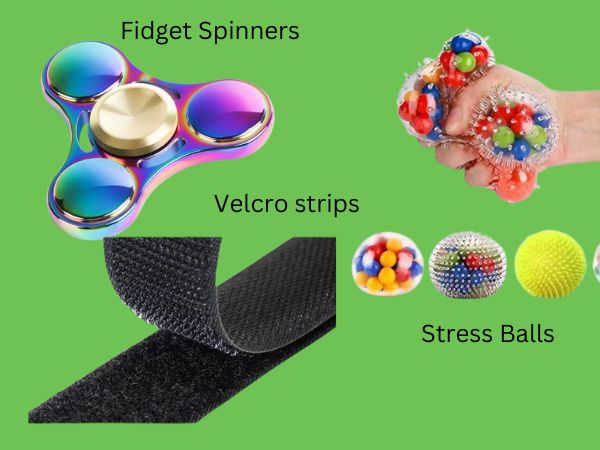
Velcro strips offer a satisfying tactile experience when pulled apart and reattached. They can be discreetly applied under desks or tables, providing a quiet fidgeting option.
3.2 Visual Fidgets
1. Unraveling Visual Fidgets
1.1 What Are Visual Fidgets?
Visual fidgets are specialized tools designed to engage the visual senses. They come in various forms, offering captivating patterns, motions, or visual stimuli that can help individuals channel their focus in a controlled and productive manner.
1.2 How Visual Stimulation Aids Focus
The sense of sight is a powerful tool for sensory regulation. By providing visually engaging stimuli, fidgets can assist individuals in redirecting excess energy, achieving a state of calm, and improving their ability to concentrate on tasks.
2. Types of Visual Fidgets
1. Liquid Motion Timers

These mesmerizing gadgets feature colorful liquids in motion, creating captivating patterns. Watching the liquid flow can be remarkably soothing and beneficial for redirecting restless energy.
2. Light Projectors

Light projectors emit calming visual displays, often with adjustable settings. These projections can transform a space, creating a serene environment that promotes focus and relaxation.
3. Kaleidoscope Tubes

Kaleidoscope tubes offer a constantly changing array of vibrant colors and shapes. The dynamic visual experience they provide can captivate attention and enhance concentration.
4. Infinity Mirrors

These mirrors create the illusion of endless reflections, providing a visually stimulating experience. The mesmerizing effect can be a powerful tool for grounding and focusing.
5. Visual Puzzles

Visual puzzles, such as intricate mazes or pattern-based challenges, require focused attention to solve. They serve as both a source of entertainment and a means to engage the mind.
3.3 Auditory Fidgets
1. Unlocking Auditory Fidgets
1.1 What Are Auditory Fidgets?
Auditory fidgets are specialized tools designed to engage the sense of hearing. They provide auditory stimuli that range from calming sounds to subtle, rhythmic noises, offering users a unique way to regulate their sensory experiences.
1.2 The Power of Auditory Stimulation in Focusing
Auditory stimulation can have a profound impact on an individual’s ability to concentrate. The auditory sense is closely linked to emotional regulation, and the right sounds can promote relaxation, reduce stress, and improve focus.
2. Diverse Types of Auditory Fidgets
1. White Noise Machines

White noise machines generate a consistent, soothing sound that can drown out background noise and distractions. They create a steady audio environment that promotes concentration.
2. Noise-Canceling Earbuds

Noise-canceling earbuds use advanced technology to block out external sounds, allowing individuals to immerse themselves in their work or studies without interruptions.
3. Clickable Fidgets
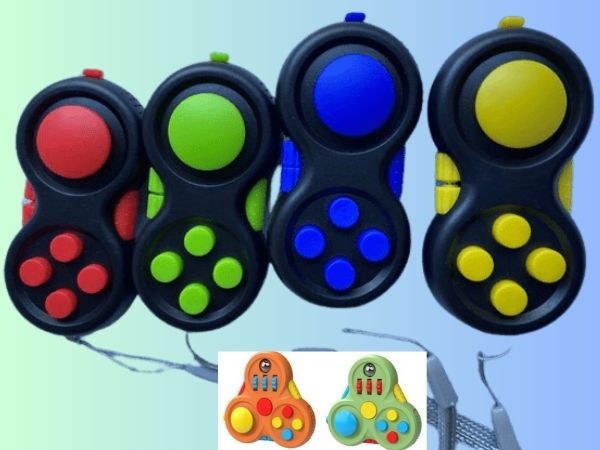
These handheld devices produce a subtle clicking or snapping sound when manipulated. They offer an outlet for excess energy while providing an auditory experience.
4. Quiet Fidget Spinners

Quiet fidget spinners are designed to produce minimal noise while providing a satisfying tactile and auditory experience. They are ideal for discreet fidgeting.
5. Nature Sound Generators

These devices recreate sounds from nature, such as ocean waves or forest ambiance. These soothing sounds can create a calming atmosphere conducive to focus.
3.4 Kinetic Fidgets
1. Unveiling Kinetic Fidgets
1.1 What Are Kinetic Fidgets?
Kinetic fidgets are specialized tools designed to engage the body’s need for movement. They offer a controlled outlet for physical activity, allowing individuals to engage their muscles while maintaining focus on tasks.
1.2 The Power of Movement in Focusing
Movement can play a crucial role in attention regulation. For many individuals, controlled physical activity can help redirect restlessness and enhance their ability to concentrate on specific tasks.
2. Different Types of Kinetic Fidgets
1. Fidget Spinners
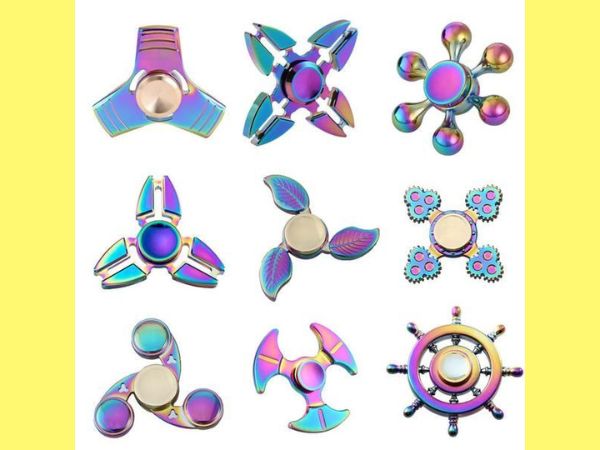
These handheld devices feature a central ball bearing that allows them to spin. Users can rotate them between their fingers, providing a satisfying kinetic experience.
2. Desk Pedals

Desk pedals are discreet tools that can be placed under a desk or table. They allow individuals to engage in low-impact leg movement, providing an outlet for excess energy.
3. Rocking Chairs

Rocking chairs provide a rhythmic motion that can be soothing and focusing. They offer a comfortable and controlled way to engage in movement during tasks.
4. Squeeze Balls with Resistance Bands

These fidgets combine the benefits of tactile engagement with the resistance of a band. Users can squeeze the ball and stretch the band, providing both tactile and kinesthetic stimulation.
5. Stress Putty

Stress putty offers a malleable texture that users can knead and shape. It provides a satisfying sensory and kinesthetic experience.
4. Benefits of Quiet Fidget Toys in Educational Settings
1. Improved Concentration and Attention Span
By providing an outlet for excess energy, quiet fidget toys can help students constructively channel their restlessness. This, in turn, leads to improved concentration and extended attention spans during lessons.
2. Reduction in Stress and Anxiety Levels
For students dealing with anxiety, the calming effect of fidget toys can be invaluable. The repetitive motions or sensory experiences provided by these toys can help reduce stress levels, allowing for a more relaxed learning environment.
3. Facilitation of Kinesthetic Learning
Kinesthetic learners thrive on physical engagement with their surroundings. Quiet fidget toys can cater to this learning style, offering a tactile experience that enhances understanding and retention of information.
5. How to Choose the Right Quiet Fidget Toy for School
1. Considering Individual Sensory Preferences
It’s essential to recognize that each student may have unique sensory preferences. Some may benefit from tactile fidgets, while others may find auditory or visual options more effective. Understanding these preferences is crucial in selecting the right fidget toy.
2. Assessing Noise Levels
For a quiet classroom environment, it’s vital to consider the noise level of the fidget toy. Opt for options that produce minimal sound or are designed to be silent, ensuring they don’t disrupt the learning experience for other students.
3. Durability and Materials
Given the regular use fidget toys may undergo, durability is a key factor. Look for toys made from sturdy materials that can withstand daily manipulation. Additionally, consider any allergies or sensitivities students may have to certain materials.
6. Implementing Quiet Fidget Toys in the Classroom
1. Collaboration with Teachers and School Staff
Open communication between teachers, staff, and parents is essential when introducing fidget toys into the classroom. This ensures that everyone is on the same page regarding their purpose and usage guidelines.
2. Establishing Guidelines for Usage
Clear and consistent guidelines should be set to regulate the use of fidget toys. This includes when and where they can be used, as well as how to properly incorporate them into the learning process.
3. Providing Education on Benefits
Educating both students and parents on the benefits of quiet fidget toys is crucial. When everyone understands how these tools can positively impact learning, they are more likely to support their implementation.
7. Success Stories: Case Studies of Improved Learning with Fidget Toys
1. John’s Journey to Improved Focus
Detailing specific cases of students who have experienced positive outcomes with fidget toys can provide powerful evidence of their effectiveness. For instance, recounting John’s progress in class after incorporating a quiet fidget toy can be inspiring and relatable.
2. Sarah’s Experience with Reduced Anxiety
Sharing personal anecdotes, like Sarah’s story of feeling more at ease and focused with the help of a fidget toy, can resonate with readers. It humanizes the benefits and underscores the potential impact on a student’s educational experience.
8. Addressing Concerns and Misconceptions
1. Common Myths About Fidget Toys
Dispelling common misconceptions surrounding fidget toys is crucial. This may include addressing concerns that they are merely distractions or that they can be disruptive in a classroom setting.
2. Research and Expert Opinions
Citing scientific studies and expert opinions can lend credibility to the effectiveness of quiet fidget toys. This section can provide empirical evidence supporting their positive impact on learning.
9. DIY Fidget Toys for Budget-Friendly Options
1. Simple Creations for Sensory Stimulation
For those on a budget, creating DIY fidget toys can be a cost-effective alternative. This section could offer practical and easy-to-follow instructions for making simple fidget tools at home.
10. Fidget Toys Beyond the Classroom
1. Applications at Home and in Other Settings
Highlighting the versatility of fidget toys is important. Discuss how they can be beneficial not only in a classroom setting but also at home, during homework, or in other environments that require focus and concentration.
11. Where to Find Quality Quiet Fidget Toys for School
1. Recommended Brands and Suppliers
Providing recommendations for reputable brands and suppliers of quiet fidget toys ensures that readers have access to high-quality options that meet their needs. For a variety of quiet fidget toys for school, you can look in the online store Amazon.
12. Ensuring Inclusivity: Fidget Toys for All Abilities
1. Catering to Diverse Sensory Needs
Recognizing that students have varying sensory needs is crucial. This section can explore how different types of fidget toys cater to a wide range of sensory preferences and abilities.
13. Testimonials from Teachers, Parents, and Students
1. Real-life Experiences with Quiet Fidget Toys
Including testimonials from various stakeholders can provide powerful anecdotes about the positive impact of fidget toys on learning and focus.
14. Expert Insights on the Effectiveness of Fidget Toys
1. Interviews with Occupational Therapists and Educators
Gaining insights from professionals in the field can offer valuable perspectives on how fidget toys can be a beneficial tool in educational settings.
15. The Future of Quiet Fidget Toys in Education
1. Trends and Innovations
This section can provide a forward-looking view of how fidget toys are evolving and how they might continue to play a role in education.
16. FAQs for “Quiet Fidget Toys for School”
1. What Are Quiet Fidget Toys?
Quiet fidget toys are specialized tools designed to provide a discreet outlet for sensory stimulation. They come in various forms, from tactile gadgets to visual or auditory stimuli, and are used to help individuals focus and regulate their sensory experiences.
2. How Do Quiet Fidget Toys Benefit Students in a School Setting?
Quiet fidget toys can benefit students by providing a non-disruptive means of channeling excess energy and sensory input. They can lead to improved focus, reduced anxiety levels, and a more conducive learning environment.
3. Are Quiet Fidget Toys Suitable for All Students?
Yes, quiet fidget toys can be beneficial for a wide range of students, including those with ADHD, anxiety, sensory processing issues, or those who simply benefit from tactile stimulation. They are designed to cater to diverse sensory needs.
4. How Should Teachers Introduce and Implement Quiet Fidget Toys in the Classroom?
Teachers should collaborate with students, parents, and relevant school staff to create clear guidelines for the usage of fidget toys. It’s important to establish when and where they can be used and provide education on their benefits.
5. Can Quiet Fidget Toys Replace Other Therapeutic Interventions?
While fidget toys can be a valuable tool, they are not meant to replace other therapeutic interventions or accommodations. They should be viewed as a complementary resource to support students in their learning journey.
6. How Can Teachers Address Concerns About Potential Disruption?
Teachers can address concerns by educating both students and parents about the purpose and benefits of quiet fidget toys. Emphasize that when used appropriately, these tools can enhance focus and reduce disruptive behaviors.
7. Are There Specific Types of Quiet Fidget Toys Recommended for Schools?
While the choice of fidget toys ultimately depends on individual preferences and needs, it’s advisable to opt for options that produce minimal noise and are non-distracting to others. Tactile fidgets and visually engaging toys tend to be popular choices.
8. How Can Schools Ensure Inclusivity When Implementing Quiet Fidget Toys?
To ensure inclusivity, schools should consider the diverse sensory needs of their students. Provide a variety of fidget toy options and encourage open communication to determine which tools work best for each individual.
9. Can Students Bring Their Own Quiet Fidget Toys to School?
Yes, students can bring their fidget toys to school, provided they adhere to the school’s guidelines and do not disrupt the learning environment. Teachers may also suggest specific types of fidget toys that are conducive to the classroom setting.
10. What Are Some DIY Alternatives for Quiet Fidget Toys?
For budget-conscious options, various DIY fidget toys can be created using readily available materials. These can include stress balls made from balloons and rice or tactile discs fashioned from textured fabrics.
11. Are fidget toys allowed at school?
Yes, many schools now allow fidget toys. They are recognized for their potential to help students focus and manage restlessness. However, it’s important to follow specific guidelines set by each school to ensure their appropriate use in the classroom.
12. Do fidget toys help focus in class?
Yes, fidget toys can help improve focus in class. By providing a subtle outlet for excess energy and sensory input, they allow students to redirect restlessness, ultimately enhancing their ability to concentrate on lessons and tasks.
13. Are fidget toys good for studying?
Absolutely, fidget toys are beneficial for studying. They offer a controlled means to engage the senses, helping students channel excess energy. This can lead to improved concentration, making them valuable tools for effective learning and studying.
17. Conclusion: Empowering Learning through Quiet Fidget Toys
Quiet fidget toys for schools have emerged as invaluable tools in the educational landscape, offering a simple yet powerful solution to enhance focus and learning. By understanding their benefits and implementing them effectively, we pave the way for a more conducive learning environment.


